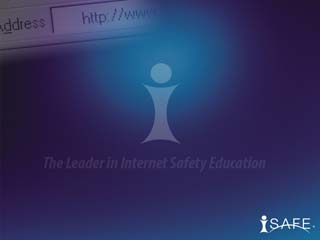Implementing Three Cs
Are you are familiar with the three Rs—reading, writing, and arithmetic? Can you name the emerging three Cs? And, equally important, do you believe the three Cs—cyber safety, cyber citizenship, and cyber security—are relevant for next generation learning skills?

Integrating digital-age experiences into KPBSD curriculum develops creative, productive learners. Online safety is a key component in the Kenai Peninsula Borough School District, therefore, educating students, staff, parents, and the community is essential. Throughout the 2011-2012 school year, elementary, middle school, and high school students will become knowledgeable about the appropriate and effective use of digital tools.

Beginning in January 2012, the national i-SAFE program will be implemented through the health curriculum at KPBSD schools. Staff training will be completed at all school sites by mid-December, 2011. KPBSD agrees with i-SAFE: “Concerned people now realize awareness and true safety online is not found in software filters—it is found in education and community support.”
Lessons in the i-SAFE curriculum will be grade specific. Topics that students and staff will engage include:
- Cyber community citizenship (CCC)
- Personal safety online (PSO)
- Intellectual property (IP)
- Appropriate online behavior (AOB)
- Cyber-bullying (CB)
- Social networking (SN)
- Digital literacy (DL)
- Cyber security (CS)

Anticipating the rapidly changing online educational resources, the Children’s Internet Protection Act (CIPA), and the Federal Communications Commission e-Rate program for schools and libraries, KPBSD formed an Online Safety Recommendation Committee. Eighteen months ago the committee undertook research and recommendations for online safety integration in KPBSD schools. A pilot program took place in January 2011 at McNeil Canyon Elementary, along with additional classroom sites. In May 2011, the decision was made to implement the i-SAFE program district wide.
Sobering statistics from the National Assessment Center (NAC):
“35% of 5-12 graders said their parents would disapprove or punish them if they knew about all their Internet activities. 53% in grades 5-12 said they would meet face-to-face with someone they first met online. After e-Safety lessons, 91% said they are equipped to see and stay away from dangerous things on the Internet.”

Every school in our geographically vast school district is wireless. Our Information Services Department is exceptional. Looking to the future, with value on the three Rs and the three Cs, we hope you will join us to applaud the skilled and visionary leaders and educators in our school district. KPBSD has and will continue to put in place the necessary ingredients to collaboratively move forward with next generation learning skills. The International Society for Technology in Education (ISTE) reminds us, “In today’s digital learning culture, it’s less about staying ahead and more about moving forward as members of dynamic learning communities.”
KPBSD embraces the digital world where our students interact. Implementing online safety ensures students will become knowledgeable with the appropriate use of digital tools, instructional and support staff will appropriately model and monitor use, and KPBSD will be in compliance with state and federal guidelines.
Links:

